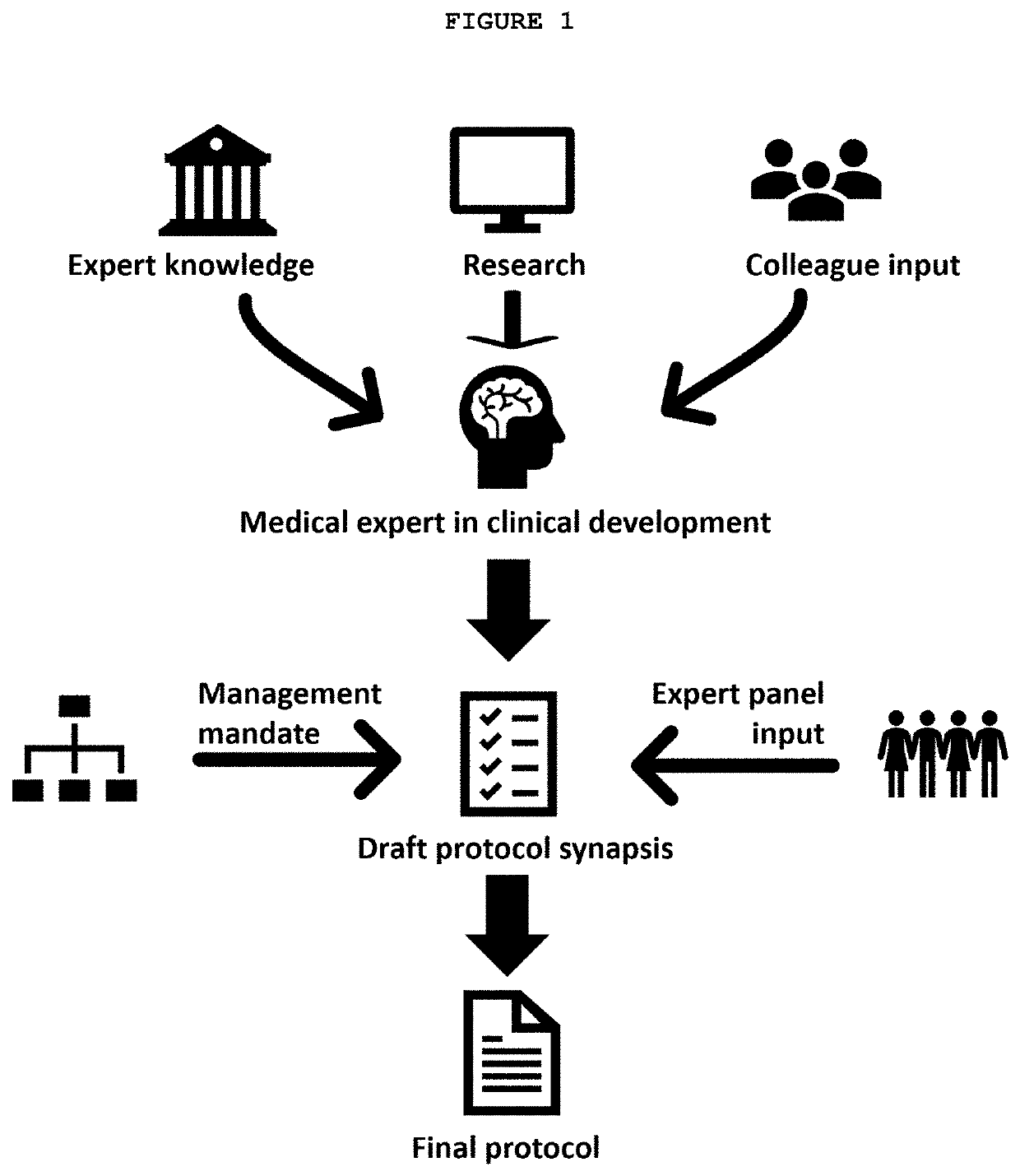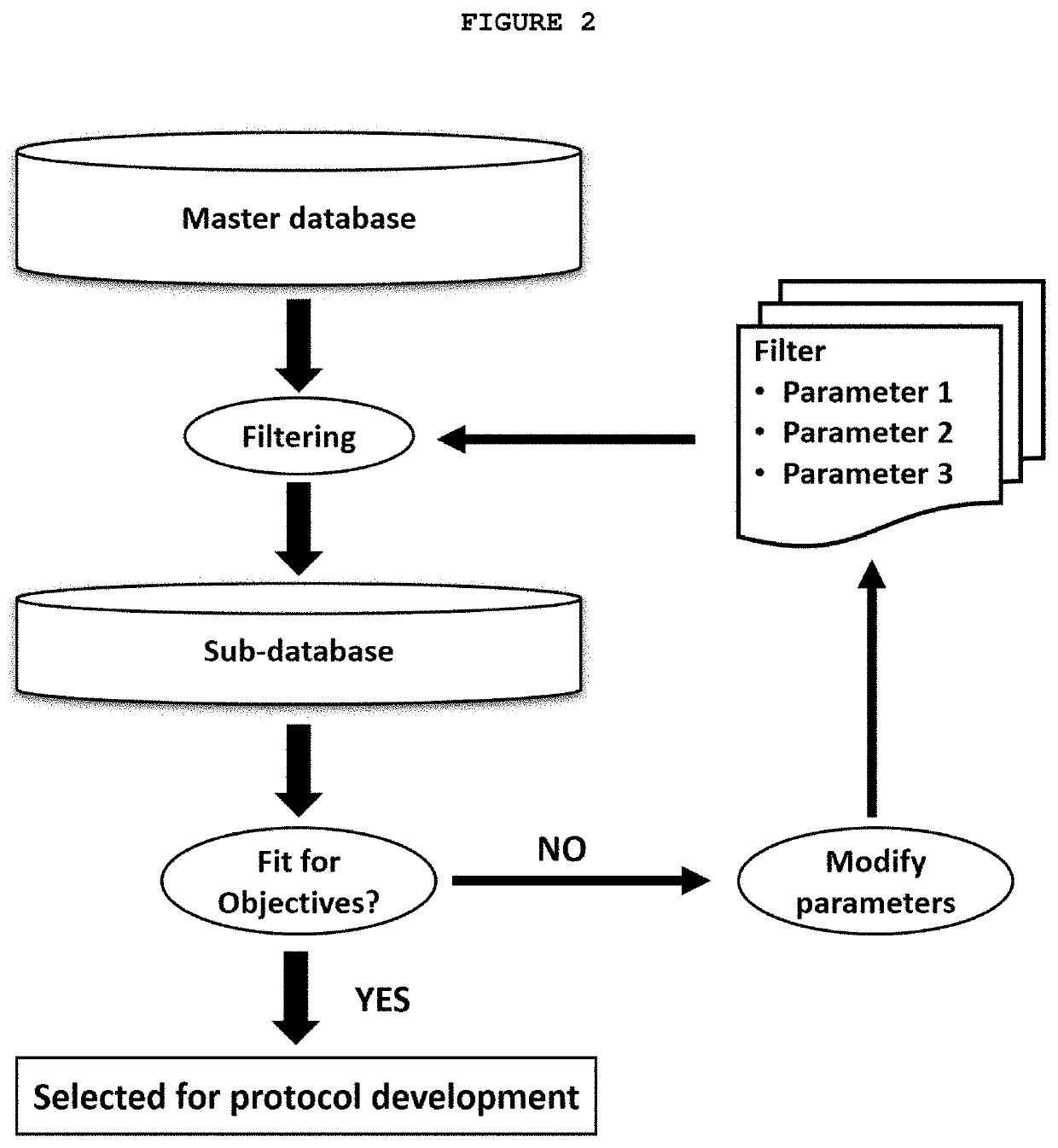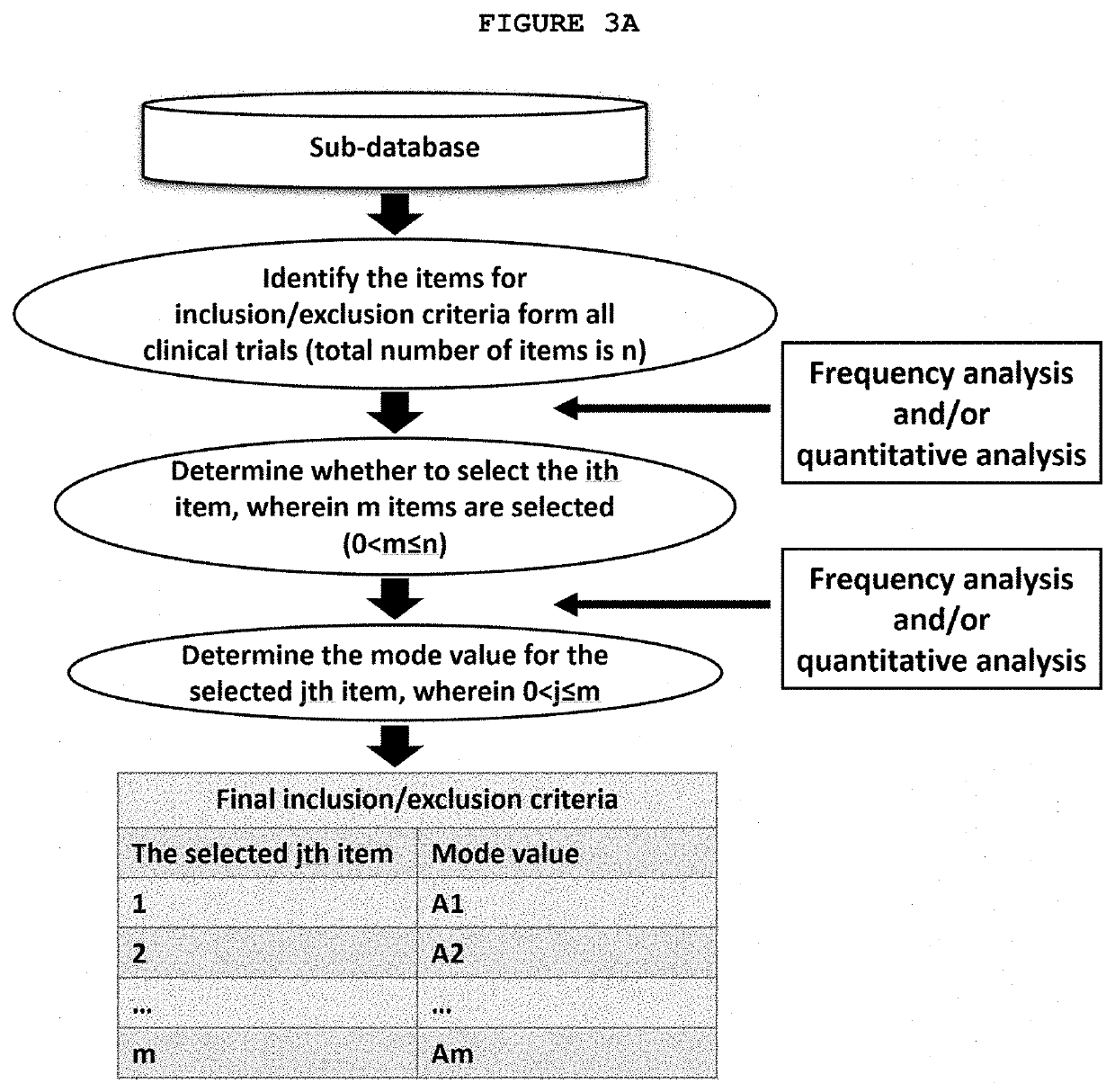Method and system for developing clinical trial protocols
a clinical trial and protocol technology, applied in the field of clinical trial protocol development, can solve the problems of clinical trial running into trouble, poor patient enrollment, and longer time, and achieve the effect of shortening the time period
- Summary
- Abstract
- Description
- Claims
- Application Information
AI Technical Summary
Benefits of technology
Problems solved by technology
Method used
Image
Examples
example 1
[0130]A sub-database for non-small cell lung cancer (NSCLC) clinical trials is created by filtering a master database containing clinical trials data. The filter contains the following parameters:[0131]a) The disease / disorder is NSCLC;[0132]b) It is a Phase II clinical trial;[0133]c) Each clinical trial has randomized 99 to 201 patients; and[0134]d) Each clinical trial has a total number of investigator sites in a range of 10-96.
[0135]A total of 178 clinical trials were selected and included in the sub-database, which was further used to establish the inclusion / exclusion criteria for the protocol.
example 2
[0136]With the sub-database from Example 1, the frequency for each value of each item may be calculated. The mode value, which is the value with the highest frequency may then be identified. In one embodiment, the desirable value corresponding to the minimum risk is equal to the mode value.
[0137]Identification of Value for Lower Age Limit: There are 163 trials in the sub-database that include Lower Age Limit as a parameter. Among them, a Lower Age Limit of 18 (i.e., the age of a patient is 18 years or older) was specified in 148 trials. The mode value for Lower Age Limit is “18” as it is the value used in the largest number of the clinical trials in the sub-database as shown in Table 1. In this case the desirable value corresponding to the minimum risk is equal to the mode value.
[0138]Identification of Value for Upper Age Limit: There are 163 trials that include Upper Age Limit as a parameter. As shown in Table 2, “N / A” (no upper age limit) was specified in 142 trials as a value for...
example 3
[0146]In one embodiment, the inclusion / exclusion criteria are further verified by comparing the patient characteristics that result from using the inclusion / exclusion criteria based on historical data with those of patients at baseline and modifying (or fine tuning) inclusion / exclusion criteria if necessary.
TABLE 5Status of ECOG Performance ScoreScoreECOG Performance Status0Fully active, able to carry on all pre-disease performance withoutrestriction1Restricted in physically strenuous activity but ambulatory and ableto carry out work of a light or sedentary nature, e.g., light housework, office work2Ambulatory and capable of all selfcare but unable to carry out anywork activities; up and about more than 50% of waking hours3Capable of only limited selfcare; confined to bed or chair morethan 50% of waking hours4Completely disabled; cannot carry on any selfcare; totally confinedto bed or chair5Dead
[0147]In one embodiment, the information on a group patient meeting the filter parameters...
PUM
 Login to View More
Login to View More Abstract
Description
Claims
Application Information
 Login to View More
Login to View More - R&D
- Intellectual Property
- Life Sciences
- Materials
- Tech Scout
- Unparalleled Data Quality
- Higher Quality Content
- 60% Fewer Hallucinations
Browse by: Latest US Patents, China's latest patents, Technical Efficacy Thesaurus, Application Domain, Technology Topic, Popular Technical Reports.
© 2025 PatSnap. All rights reserved.Legal|Privacy policy|Modern Slavery Act Transparency Statement|Sitemap|About US| Contact US: help@patsnap.com



